Latest Thread
You are using an out of date browser. It may not display this or other websites correctly.
You should upgrade or use an alternative browser.
You should upgrade or use an alternative browser.
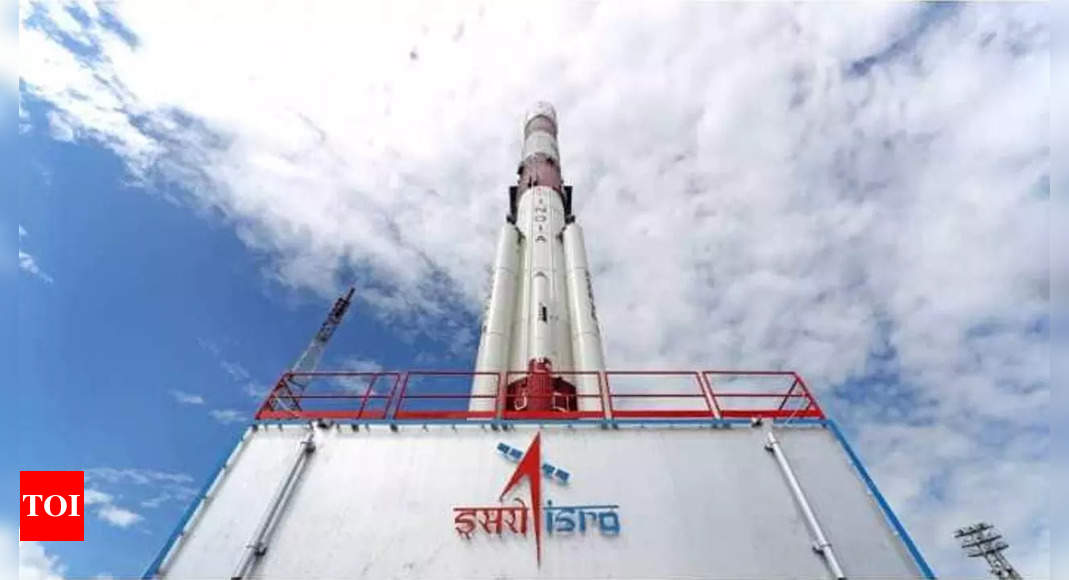
Key Chandrayaan-3, SSLV & RLV tests lined up; 1 PSLV launch coming up too | India News - Times of India
India News: BENGALURU: The Indian Space Research Organisation (Isro), which has already completed its first successful launch this year is getting busy with a sle.
Partnering with India on space, science & technology to grow Aussie industry | Ministers for the Department of Industry, Science, Energy and Resources
The Morrison Government is investing more than $42 million in a series of space, science and technology initiatives with India to generate opportunities for Australian businesses and researchers to grow and create jobs.
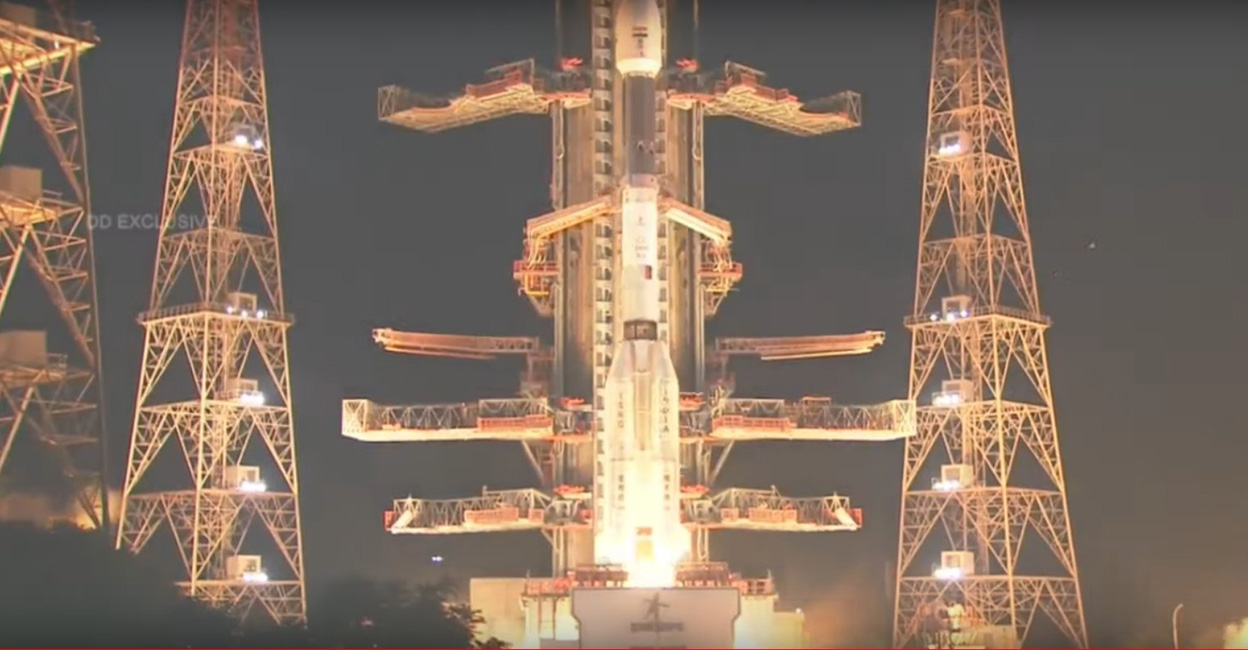
Why did GSLV-F10 Mission fail? ISRO's Failure Analysis Committee has come up with the answers
The objective of the launch was to place the Earth Observation Satellite EOS-3 in a geosynchronous orbit in space.
@Gessler @Paro @Rajaraja Chola @Milspec et al.
Better data acquisition equipment maybe?
Why did GSLV-F10 Mission fail? ISRO's Failure Analysis Committee has come up with the answers
The objective of the launch was to place the Earth Observation Satellite EOS-3 in a geosynchronous orbit in space.www.onmanorama.com
@Gessler @Paro @Rajaraja Chola @Milspec et al.
Redundant pressure measurement at higher resolution transmitted over distances.
(National instruments PXI system, Siemens Scadas, or my favorite Dewesoft Dewe-43A) I have seen a bit of penny wise pound foolish attitude when it comes to sensor deployment and investing in a good data acquisition system.
Better data acquisition equipment maybe?
Redundant pressure measurement at higher resolution transmitted over distances.
(National instruments PXI system, Siemens Scadas, or my favorite Dewesoft Dewe-43A) I have seen a bit of penny wise pound foolish attitude when it comes to sensor deployment and investing in a good data acquisition system.
Yah especially when you have fuelled it earlier, de-fuelled (due to abortion + postponing launch) and then refuel again months later with cryogenic fuels.
Sensoring + protocols have to be reliable to detect glitches on critical components that have several other things riding on it.
824 crore INR = 108 mln USD
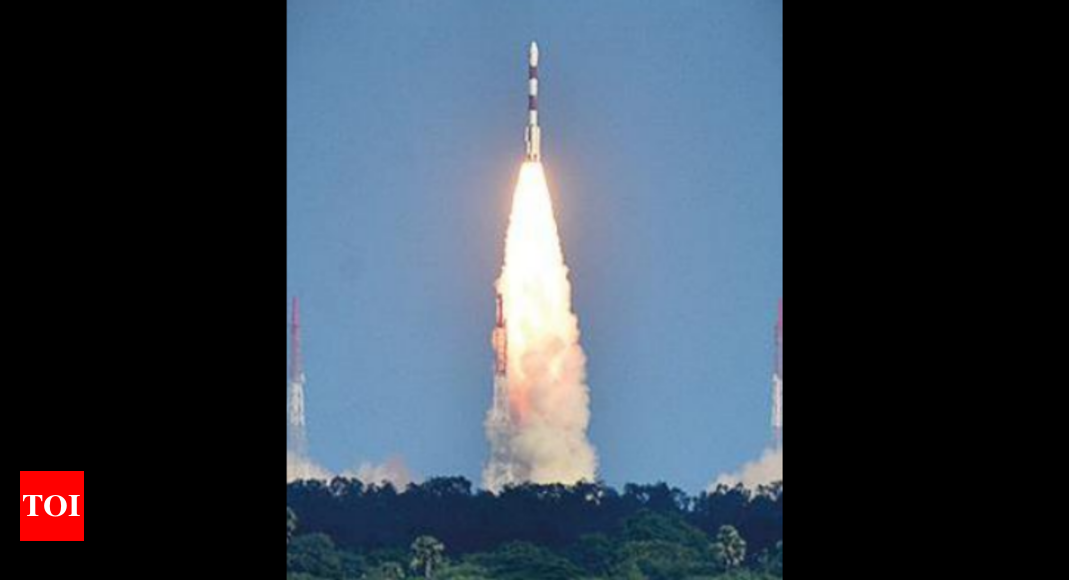
 timesofindia.indiatimes.com
timesofindia.indiatimes.com
BENGALURU: Manufacture of polar space launch vehicles (PSLVs) — which was the preserve of premier agency Isro for nearly three decades — has been awarded to an HAL-L&T consortium which will become the first group outside the storied space campus to produce five PSLVs in the coming months, reports Chethan Kumar. This is expected to pave the way for commercialisation of other rockets such as SSLV and GSLV.
Space PSU NewSpace India opened the commercial bids of the three shortlisted entities — HAL-L&T, BHEL (single firm) and the BEL-Adani Alpha Design-BEML consortium — on Wednesday. The winning bid quoted Rs 824 crore, BHEL Rs 1,129 crore and the third group Rs 1,218 crore, a source said. These figures exclude taxes.
TOI was the first to report on March 22 that NSIL, which has been authorised to commercialise PSLV production by the department of space, had completed evaluation of the bids.HAL chairman and managing director R Madhavan told TOI on Friday: "We've won the contract for five PSLVs. While HAL is the lead partner, work will be shared equally with L&T. We will use all our vendors. We feel we were best equipped to handle a contract of this magnitude. While some help will come from Isro on the mission side, we will carry out most of the work. Slowly, PSLV will become an outsourced item for Isro."Although Isro had been talking about commercialising PSLV, the expression of interest was floated in August 2019. NSIL floated the request for proposal in December 2020, shortlisted three entities in early 2021 and they submitted bids in July 2021.
Adani-Alpha Design CMD Col (retd) HS Shankar said their consortium had to consider fresh investments for PSLV, whereas HAL-L&T already had infrastructure, a key reason that explains difference in the quoted price.
He said: "Alpha is already an important player in Isro's launch vehicle programmes through our fully owned subsidiaries Tokol (Peenya-Bengaluru) and Kortas (Thiruvananthapuram). Almost 15% of PSLV is made at these factories. Given that the winning consortium must procure Isro-qualified items from vendors, our subsidiaries will continue to work on the programme."
Despite the contract, Isro has its job cut out since processes relating to mission operations, trajectory design and launch campaign are completely in its domain. A senior NSIL officer put Isro's workshare at 20%, adding the space PSU was planning to ask the industry to do the first-stage stacking on the launchpad with Isro guidance, while the remaining stages will be done by Isro for the first couple of missions.
PSLV first flew in September 1993 and has completed over 50 missions since. It has put in space key science missions — Chandrayaan-1, Mars Orbiter Mission, Astrosat — all foreign satellites launched by Isro and a host of other payloads.
=================================================================
@Gessler @Amardeep Mishra @Milspec et al.

Hal-l&t Wins Over 824-cr Contract For Making 5 Pslvs | India News - Times of India
India News: Manufacture of polar space launch vehicles (PSLVs) — which was the preserve of premier agency Isro for nearly three decades — has been awarded to an
BENGALURU: Manufacture of polar space launch vehicles (PSLVs) — which was the preserve of premier agency Isro for nearly three decades — has been awarded to an HAL-L&T consortium which will become the first group outside the storied space campus to produce five PSLVs in the coming months, reports Chethan Kumar. This is expected to pave the way for commercialisation of other rockets such as SSLV and GSLV.
Space PSU NewSpace India opened the commercial bids of the three shortlisted entities — HAL-L&T, BHEL (single firm) and the BEL-Adani Alpha Design-BEML consortium — on Wednesday. The winning bid quoted Rs 824 crore, BHEL Rs 1,129 crore and the third group Rs 1,218 crore, a source said. These figures exclude taxes.
TOI was the first to report on March 22 that NSIL, which has been authorised to commercialise PSLV production by the department of space, had completed evaluation of the bids.HAL chairman and managing director R Madhavan told TOI on Friday: "We've won the contract for five PSLVs. While HAL is the lead partner, work will be shared equally with L&T. We will use all our vendors. We feel we were best equipped to handle a contract of this magnitude. While some help will come from Isro on the mission side, we will carry out most of the work. Slowly, PSLV will become an outsourced item for Isro."Although Isro had been talking about commercialising PSLV, the expression of interest was floated in August 2019. NSIL floated the request for proposal in December 2020, shortlisted three entities in early 2021 and they submitted bids in July 2021.
Adani-Alpha Design CMD Col (retd) HS Shankar said their consortium had to consider fresh investments for PSLV, whereas HAL-L&T already had infrastructure, a key reason that explains difference in the quoted price.
He said: "Alpha is already an important player in Isro's launch vehicle programmes through our fully owned subsidiaries Tokol (Peenya-Bengaluru) and Kortas (Thiruvananthapuram). Almost 15% of PSLV is made at these factories. Given that the winning consortium must procure Isro-qualified items from vendors, our subsidiaries will continue to work on the programme."
Despite the contract, Isro has its job cut out since processes relating to mission operations, trajectory design and launch campaign are completely in its domain. A senior NSIL officer put Isro's workshare at 20%, adding the space PSU was planning to ask the industry to do the first-stage stacking on the launchpad with Isro guidance, while the remaining stages will be done by Isro for the first couple of missions.
PSLV first flew in September 1993 and has completed over 50 missions since. It has put in space key science missions — Chandrayaan-1, Mars Orbiter Mission, Astrosat — all foreign satellites launched by Isro and a host of other payloads.
=================================================================
@Gessler @Amardeep Mishra @Milspec et al.
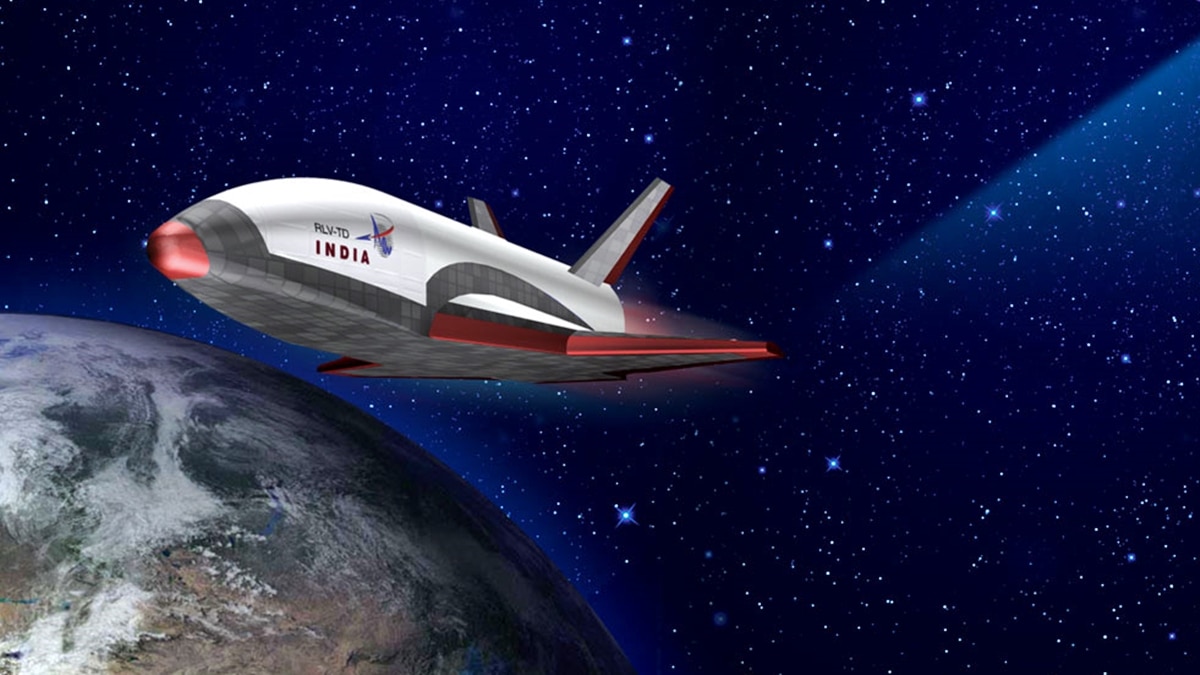
Isro looks to conduct demo, orbital flight of reusable launch vehicle
Isro has been developing Winged Reusable Launch Vehicle technology that will demonstrate hypersonic flight, autonomous landing, powered cruise flight and hypersonic flight.
The Indian Space & Research Organisation (Isro) is planning to conduct a demonstration flight and a orbital launching of a reusable launch vehicle in the coming months as it looks to target the commercial space sector. Isro has been working on a Reusable Launch Vehicle-Technology Demonstration Program to develop a vehicle that can be used multiple times, unlike now when we use a new launch vehicle for every mission.
Isro chief S Somnath has said that the reusable vehicle is critical for strategic users rather than commercial users, which will allow India to take a payload up into space and bring it back safely. Speaking to Geospatial World, the Isro chief said, "We will have a landing demonstration soon, followed by an orbital launching demonstration."
"We are also looking at how future launch vehicles can be built and how to bring down the cost of the launcher. Currently, the price per kg is typically $20,000. We have to bring it down to $5,000. This will be possible only by bringing reusability into the rocket," Somnath told Geospatial World.
Isro has been developing Winged Reusable Launch Vehicle technology that will demonstrate hypersonic flight, autonomous landing, powered cruise flight and hypersonic flight using air-breathing propulsion.
According to Isro, under the technology demonstration program, they will conduct a series of experimental flights that will focus on hypersonic flight experiment (HEX) followed by the landing experiment (LEX), return flight experiment (REX) and scramjet propulsion experiment (SPEX).
"Suppose we were to build a reusable rocket and launch it only once or twice a year that would not be economical at all. In fact, it will be costlier than an expendable launcher. We need to first create the background on which the reusable rocket will be required, work out the business and launch opportunity, and only then will a reusable rocket become economically viable," Somnath told Geospatial World.
India has been launching customer satellites on its Polar Satellite Launch Vehicles and Geosynchronous Satellite Launch vehicle (GSLV), pushing its role in the Low Earth Orbit. The Department of Space earned over Rs 351 crores ($35 million and 10 Million Euros) in foreign revenue in the last three years by conducting satellite launches of various private and international agencies.
In a written reply in the Lok Sabha, Minister for Science & Technology, Dr. Jitendra Singh said, "NSIL has already launched 45 international customer satellites onboard Isro’s Polar Satellite Launch Vehicle (PSLV) during the last three years (2019-2021) and has secured four dedicated launch service contracts for foreign satellite customers."
OneWeb, the satellite company part-owned by the UK government, has done a deal to use Indian rockets.The arrangement will supplement the contract the London-headquartered firm has with American rival and rocket operator SpaceX of California. The new deal was announced as UK Prime Minister Boris Johnston headed to India for two days of talks. The firm was forced to look for alternatives when its deal with the Russian space agency fell apart.
OneWeb said the first Indian launch of its broadband internet satellites could take place by the year's end. The spacecraft would go up from the Satish Dhawan Space Centre on Sriharikota Island in the east of the country.
The rocket to be used is likely to be India's Geosynchronous Satellite Launch Vehicle (GSLV), its largest and most capable vehicle.
View attachment 43017
GSLV Mk-III
Some sort of deal with NewSpace India, the commercial arm of the country's national space agency, was expected. OneWeb's largest shareholder is the Indian conglomerate Bharti Global. Its chairman, Sunil Bharti Mittal, is also the executive chairman at OneWeb.
"This is yet another historic day for collaboration in space, thanks to the shared ambition and vision of NewSpace India and OneWeb," he said in a statement. "This most recent agreement on launch plans adds considerable momentum to the development of OneWeb's network, as we work together across the space industry toward our common goal of connecting communities globally."
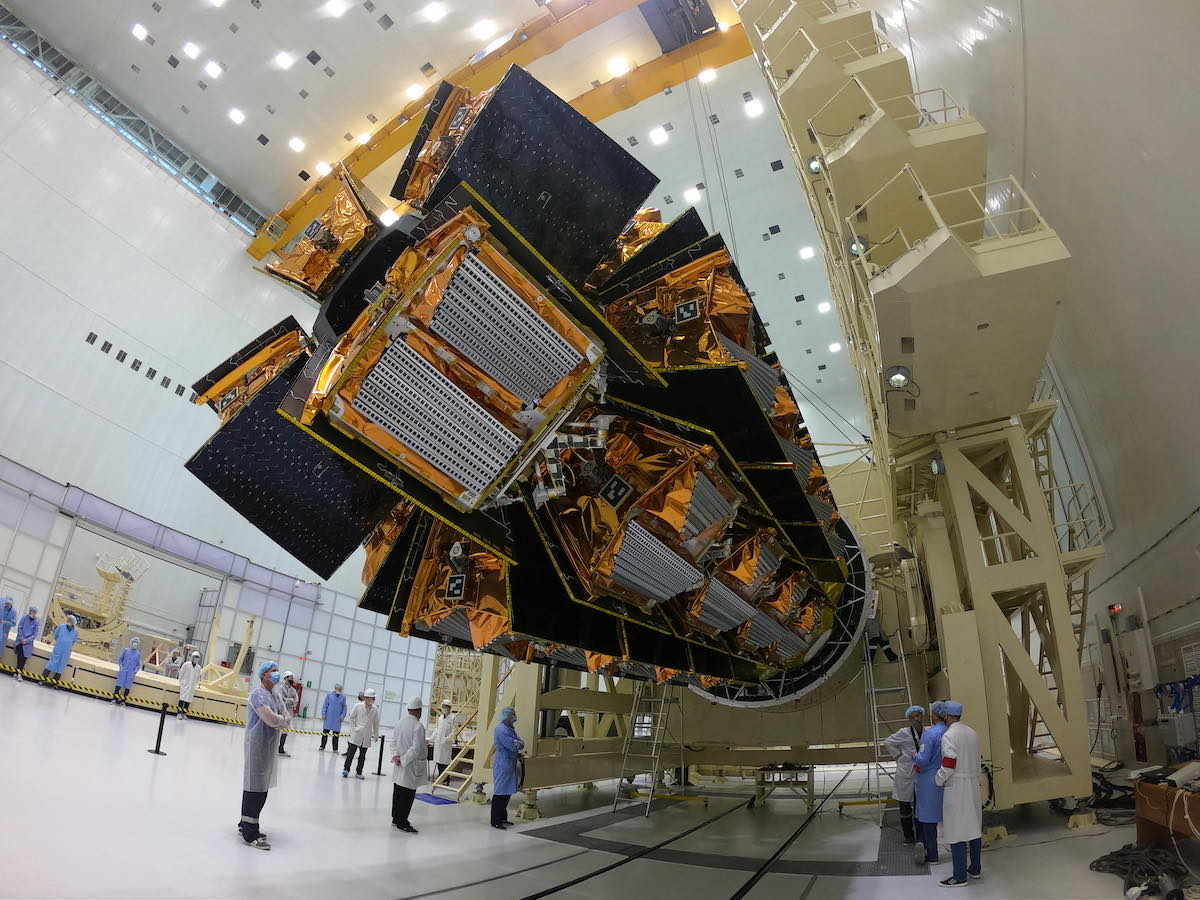
OneWeb satellite stack
OneWeb's plans to build a global network of internet satellites in the sky was knocked off course in March by the war in Ukraine.
The conflict, and the resulting western sanctions against Russia, led to the company losing access to Russian Soyuz rockets.
With only two-thirds of the satellites in orbit needed to complete its network, OneWeb had little choice but to go to SpaceX to book some rides on the California outfit's Falcon rockets. SpaceX is currently building its own space-borne internet service called Starlink. OneWeb didn't say how many Indian launches it would use, or what its contract with NewSpace India was worth.
The GSLV can lift about nine tonnes to low-Earth orbit - similar to the Soyuz. It was last used in 2019 to launch India's Chandrayaan-2 Moon mission.
OneWeb has so far launched 428 satellites, enough to provide internet broadband connections above 50 degrees North in latitude. It needs, however, to get to 650 or so to start delivering connections across the whole Earth. The company's intention is to expand later generations of the network to encompass 7,000 satellites in orbit, meaning the GSLV could become a key component in the future of the OneWeb project.
View attachment 43019
Soyuz 2.1 - Launched from French Guiana
"We welcome the partnership between OneWeb and NewSpace India Limited (NSIL); it's a historic development and this will surely pave the way for a greater participation of private space players, resulting in a boost to the Indian space economy," said Lt. Gen. Anil Kumar Bhatt (Retd), the director general of the Indian Space Association. "This partnership has the potential to drive the attention of many international players towards India's capabilities, leading to a significant increase in our share in the international space economy which is just 2.6% currently; and at the same time contribute to nation building and economic growth of the country," he told BBC News.
Building space-borne internet systems is the vogue of the moment. As well as OneWeb and SpaceX-Starlink, the Amazon online retailer is about to get into this market. Earlier this month it signed the largest commercial launch deal ever, purchasing up to 83 launches from three separate rocket companies to loft its Kuiper system. This would see more than 3,000 internet broadband satellites placed in low-Earth orbit over a period of five years.
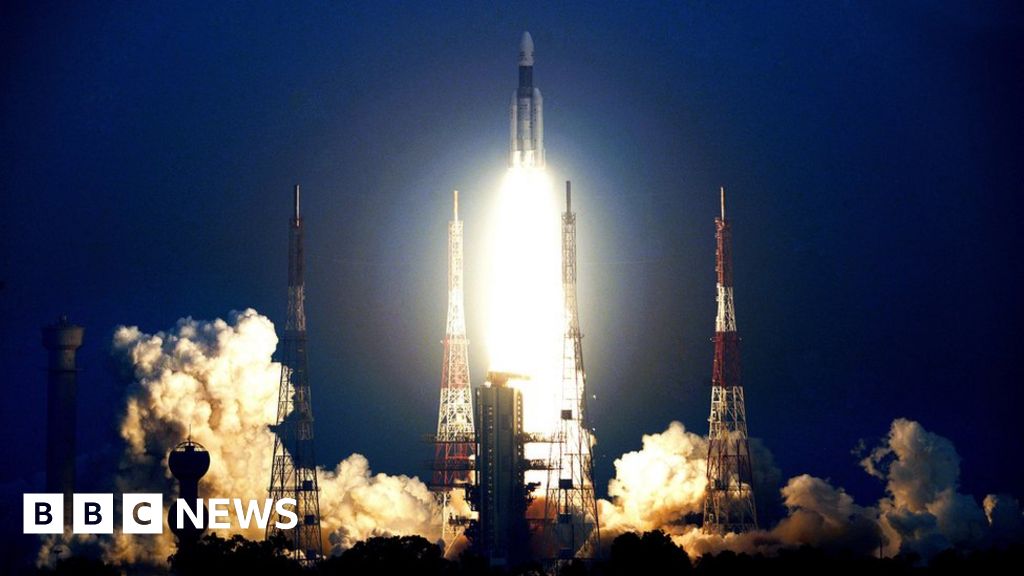
OneWeb: UK satellite firm does deal to use Indian rockets
The space internet firm, part-owned by the UK government, agrees a launch programme with India.www.bbc.com
++++
Comment: The Mk-3 GSLV is actually capable of orbiting greater payloads to LEO than the Soyuz-2 variants - given the right payload adapter & nose fairing arrangement, it should be able to throw more satellites per launch than was previously possible with Roscosmos. Of course ISRO/NSIL cannot match the launch frequency of the Russians (yet).
@Nilgiri @Test7
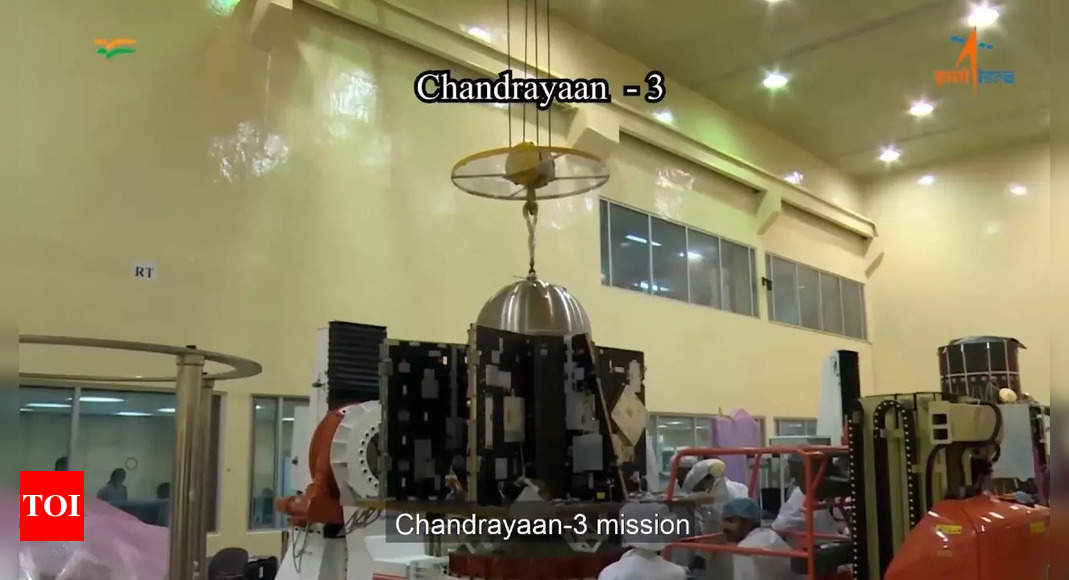
Isro gives first glimpse of Chandrayaan-3 lunarcraft; mission launch due in August | India News - Times of India
India News: Space agency Isro has shown the first glimpse of the country’s third lunar spacecraft Chandrayaan-3 in a documentary. Chandrayaan-3, which is in the a
NEW DELHI: Space agency Isro has shown the first glimpse of the country’s third lunar spacecraft Chandrayaan-3 in a documentary. Chandrayaan-3, which is in the assembly phase and is expected to be launched in August this year.
The photos of the moon mission were part of a documentary titled ‘Space on Wheels’ that Isro has posted on its website, which showcased 75 satellites launched by India as part of the ‘Azadi Ka Amrit Mahotsav’ celebrations.
Isro chairman S Somnath has recently said that they are testing the propulsion system of the third lunar mission.
The Isro documentary appears to show the lander of Chandrayaan-3 that will make India’s second attempt on moon-landing. The video also shows the ongoing work on India’s first manned space mission Gaganyaan, Venus orbiter mission and Indo-US joint venture project NISAR mission.
Chandrayaan-3, which was earlier scheduled for launch in late 2020, was delayed due to the Covid pandemic. The lunarcraft is a lander-specific mission and won’t have any orbiter as the first orbiter of Chandrayaan-2 is working satisfactorily. Chandrayaan-3 mission is significant as it will test Isro’s second attempt for landing on Moon and will pave the way for interplanetary missions.
Earlier Chandrayaan-2’s mission, which was launched on July 22, 2019, was only partially successful as the lander had crash-landed. However, the Chandrayaan-2 orbiter has been circling around the Moon at around 100 km altitude from the lunar surface since August 20, 2019 and taking images of the lunar surface and sending key data related to the Moon.
============================================================================
Human-rated version of S200 solid rocket booster, called HS200 has been tested:
The S200 is the 3rd largest SRB in the world after the Space Shuttle's boosters & that of Ariane 5, and is the largest in Asia.
The S200 is the 3rd largest SRB in the world after the Space Shuttle's boosters & that of Ariane 5, and is the largest in Asia.
Human-rated version of S200 solid rocket booster, called HS200 has been tested:
The S200 is the 3rd largest SRB in the world after the Space Shuttle's boosters & that of Ariane 5, and is the largest in Asia.
fire starter
Well-known member
The NASA-ISRO SAR (NISAR) Mission will measure Earth’s changing ecosystems, dynamic surfaces, and ice masses providing information about biomass, natural hazards, sea level rise, and groundwater, and will support a host of other applications.
NISAR will observe Earth’s land and ice-covered surfaces globally with 12-day regularity on ascending and descending passes, sampling Earth on average every 6 days for a baseline 3-year mission.
NISAR will observe Earth’s land and ice-covered surfaces globally with 12-day regularity on ascending and descending passes, sampling Earth on average every 6 days for a baseline 3-year mission.
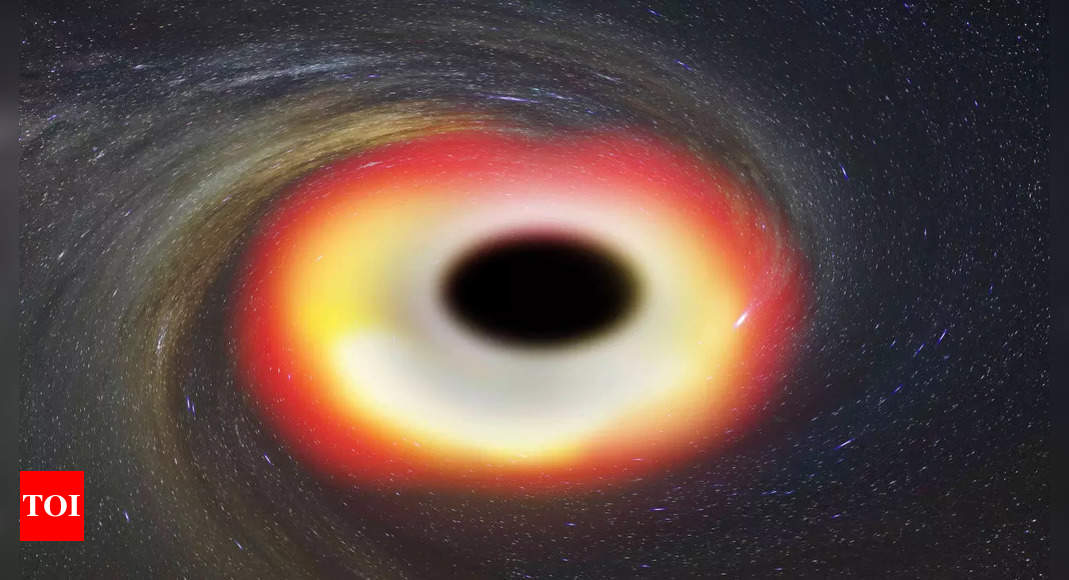
India’s AstroSat witnesses black hole birth for the 500th time | India News - Times of India
India News: India’s first dedicated multi wavelength space observatory, Astrosat, has detected the birth of a black hole for the 500th time, a key milestone that .
India’s first dedicated multi wavelength space observatory, Astrosat, has detected the birth of a black hole for the 500th time, a key milestone that Indian scientists have called a “remarkable achievement”.
Elaborating on the research, Pune-based Inter-University Centre for Astronomy and Astrophysics ( IUCAA), in a recent statement, said, “One of the instruments in Astrosat is the Cadmium Zinc Telluride Imager (CZTI) — which has just witnessed the birth of a black hole for the five hundredth time.” “The wealth of data obtained by CZTI on Gamma Ray Bursts is making a big impact worldwide,” Prof Dipankar Bhattacharya of Ashoka University and IUCAA, who is the current principal investigator of CZTI, said.
AstroSat, launched by Isro in space in September 2015, is one of the most sensitive space telescopes in the world as it has five instruments that can simultaneously study the universe in ultraviolet, optical and X-ray radiation.
“The very first scientific result from AstroSat was the detection of GRB 151006A: just hours after the instrument was powered on after launch,” said Prof Varun Bhalerao, who leads the Gamma-Ray Bursts search effort.
Black holes are objects with a gravitational pull so strong that not even light can escape. They, therefore, generate a lot of curiosity among scientists across the world and are the focus of several international studies.
One way of forging black holes is the death of massive stars in “Gamma Ray Bursts ” (GRBs) – powerful explosions that are also called “mini big-bangs” as they send intense jets of light and high-energy radiation shooting across the universe. Another way to create GRBs is the collision of two neutron stars. Astronomers study Gamma-rays and X-rays from such bursts to understand the black hole formation.
AstroSat’s CZTI has been studying GRBs since it first opened its eyes 6.5 years ago. A unique aspect of CZTI is the ability to measure the “polarisation” of X-rays: an ability that is lacking in flagship missions like Nasa’s Neil Gehrels Swift Telescope or the US-Europe Fermi Space Telescope.
Tanmoy Chattopadhyay (Stanford University), who played a key role in these polarisation studies, says, “Polarisation tells us what is happening just outside the newly formed black hole. It is the most important measurement to distinguish between different theories of Gamma-Ray Bursts”. Numerous GRB studies from CZTI have been published in reputed journals worldwide.
===============================
Astrosat wiki page: https://en.wikipedia.org/wiki/Astrosat
fire starter
Well-known member
fire starter
Well-known member
fire starter
Well-known member
India's first private spacecraft manufacturing facility launched in Bengaluru
India's first private spacecraft manufacturing facility launched in Bengaluru
Indian Space Research Organisation (ISRO) chairman S Somanath inaugurated India's first private spacecraft manufacturing facility.


